Philipp Dufter
MANZANO: A Simple and Scalable Unified Multimodal Model with a Hybrid Vision Tokenizer
Sep 19, 2025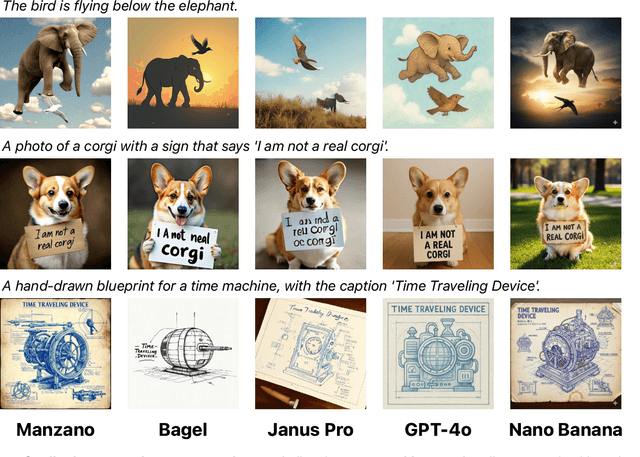

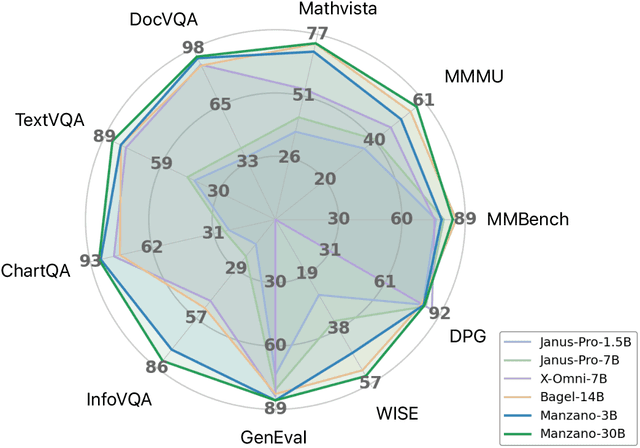
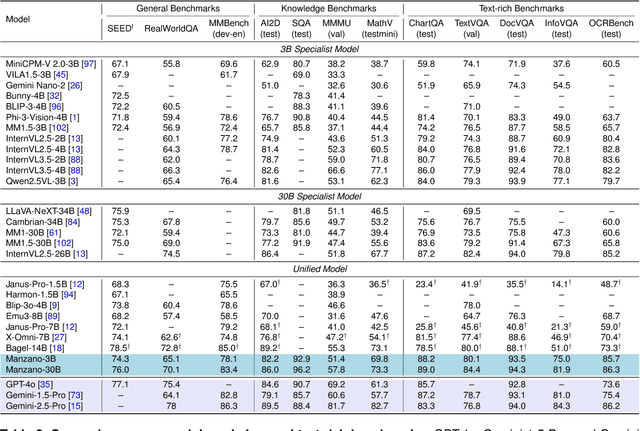
Abstract:Unified multimodal Large Language Models (LLMs) that can both understand and generate visual content hold immense potential. However, existing open-source models often suffer from a performance trade-off between these capabilities. We present Manzano, a simple and scalable unified framework that substantially reduces this tension by coupling a hybrid image tokenizer with a well-curated training recipe. A single shared vision encoder feeds two lightweight adapters that produce continuous embeddings for image-to-text understanding and discrete tokens for text-to-image generation within a common semantic space. A unified autoregressive LLM predicts high-level semantics in the form of text and image tokens, with an auxiliary diffusion decoder subsequently translating the image tokens into pixels. The architecture, together with a unified training recipe over understanding and generation data, enables scalable joint learning of both capabilities. Manzano achieves state-of-the-art results among unified models, and is competitive with specialist models, particularly on text-rich evaluation. Our studies show minimal task conflicts and consistent gains from scaling model size, validating our design choice of a hybrid tokenizer.
Multimodal Autoregressive Pre-training of Large Vision Encoders
Nov 21, 2024



Abstract:We introduce a novel method for pre-training of large-scale vision encoders. Building on recent advancements in autoregressive pre-training of vision models, we extend this framework to a multimodal setting, i.e., images and text. In this paper, we present AIMV2, a family of generalist vision encoders characterized by a straightforward pre-training process, scalability, and remarkable performance across a range of downstream tasks. This is achieved by pairing the vision encoder with a multimodal decoder that autoregressively generates raw image patches and text tokens. Our encoders excel not only in multimodal evaluations but also in vision benchmarks such as localization, grounding, and classification. Notably, our AIMV2-3B encoder achieves 89.5% accuracy on ImageNet-1k with a frozen trunk. Furthermore, AIMV2 consistently outperforms state-of-the-art contrastive models (e.g., CLIP, SigLIP) in multimodal image understanding across diverse settings.
MM1.5: Methods, Analysis & Insights from Multimodal LLM Fine-tuning
Sep 30, 2024


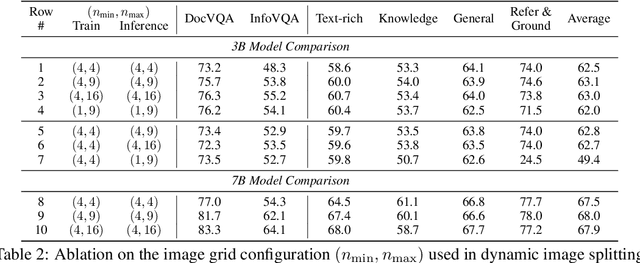
Abstract:We present MM1.5, a new family of multimodal large language models (MLLMs) designed to enhance capabilities in text-rich image understanding, visual referring and grounding, and multi-image reasoning. Building upon the MM1 architecture, MM1.5 adopts a data-centric approach to model training, systematically exploring the impact of diverse data mixtures across the entire model training lifecycle. This includes high-quality OCR data and synthetic captions for continual pre-training, as well as an optimized visual instruction-tuning data mixture for supervised fine-tuning. Our models range from 1B to 30B parameters, encompassing both dense and mixture-of-experts (MoE) variants, and demonstrate that careful data curation and training strategies can yield strong performance even at small scales (1B and 3B). Additionally, we introduce two specialized variants: MM1.5-Video, designed for video understanding, and MM1.5-UI, tailored for mobile UI understanding. Through extensive empirical studies and ablations, we provide detailed insights into the training processes and decisions that inform our final designs, offering valuable guidance for future research in MLLM development.
Ferret-v2: An Improved Baseline for Referring and Grounding with Large Language Models
Apr 11, 2024

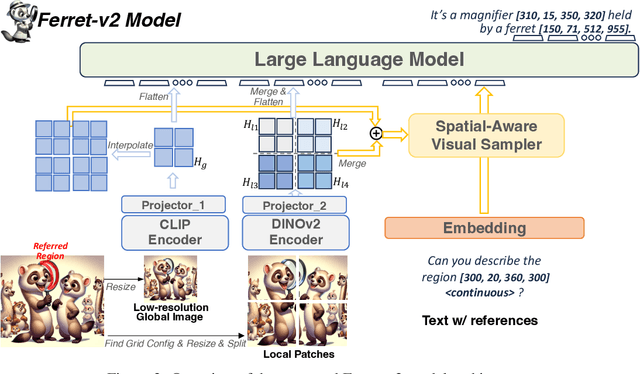
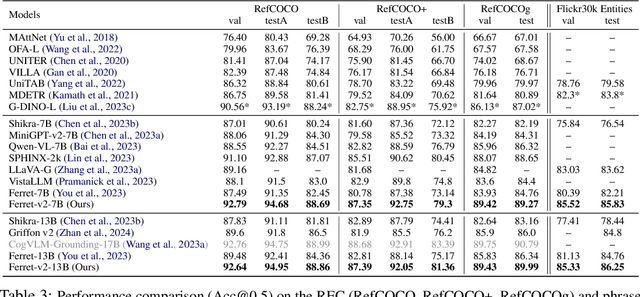
Abstract:While Ferret seamlessly integrates regional understanding into the Large Language Model (LLM) to facilitate its referring and grounding capability, it poses certain limitations: constrained by the pre-trained fixed visual encoder and failed to perform well on broader tasks. In this work, we unveil Ferret-v2, a significant upgrade to Ferret, with three key designs. (1) Any resolution grounding and referring: A flexible approach that effortlessly handles higher image resolution, improving the model's ability to process and understand images in greater detail. (2) Multi-granularity visual encoding: By integrating the additional DINOv2 encoder, the model learns better and diverse underlying contexts for global and fine-grained visual information. (3) A three-stage training paradigm: Besides image-caption alignment, an additional stage is proposed for high-resolution dense alignment before the final instruction tuning. Experiments show that Ferret-v2 provides substantial improvements over Ferret and other state-of-the-art methods, thanks to its high-resolution scaling and fine-grained visual processing.
MM1: Methods, Analysis & Insights from Multimodal LLM Pre-training
Mar 22, 2024



Abstract:In this work, we discuss building performant Multimodal Large Language Models (MLLMs). In particular, we study the importance of various architecture components and data choices. Through careful and comprehensive ablations of the image encoder, the vision language connector, and various pre-training data choices, we identified several crucial design lessons. For example, we demonstrate that for large-scale multimodal pre-training using a careful mix of image-caption, interleaved image-text, and text-only data is crucial for achieving state-of-the-art (SOTA) few-shot results across multiple benchmarks, compared to other published pre-training results. Further, we show that the image encoder together with image resolution and the image token count has substantial impact, while the vision-language connector design is of comparatively negligible importance. By scaling up the presented recipe, we build MM1, a family of multimodal models up to 30B parameters, including both dense models and mixture-of-experts (MoE) variants, that are SOTA in pre-training metrics and achieve competitive performance after supervised fine-tuning on a range of established multimodal benchmarks. Thanks to large-scale pre-training, MM1 enjoys appealing properties such as enhanced in-context learning, and multi-image reasoning, enabling few-shot chain-of-thought prompting.
Towards a Broad Coverage Named Entity Resource: A Data-Efficient Approach for Many Diverse Languages
Jan 28, 2022
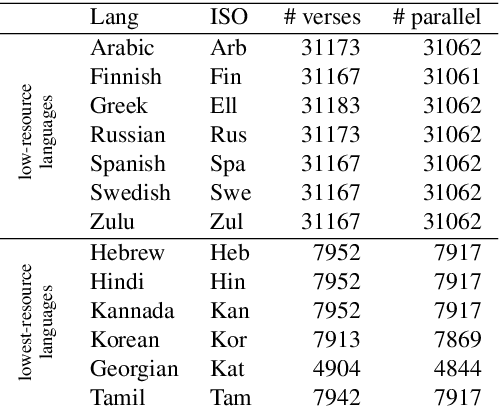
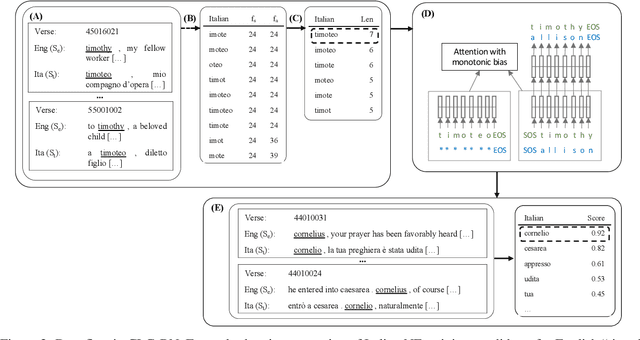
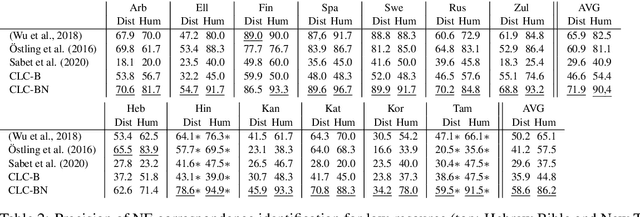
Abstract:Parallel corpora are ideal for extracting a multilingual named entity (MNE) resource, i.e., a dataset of names translated into multiple languages. Prior work on extracting MNE datasets from parallel corpora required resources such as large monolingual corpora or word aligners that are unavailable or perform poorly for underresourced languages. We present CLC-BN, a new method for creating an MNE resource, and apply it to the Parallel Bible Corpus, a corpus of more than 1000 languages. CLC-BN learns a neural transliteration model from parallel-corpus statistics, without requiring any other bilingual resources, word aligners, or seed data. Experimental results show that CLC-BN clearly outperforms prior work. We release an MNE resource for 1340 languages and demonstrate its effectiveness in two downstream tasks: knowledge graph augmentation and bilingual lexicon induction.
BERT Cannot Align Characters
Sep 20, 2021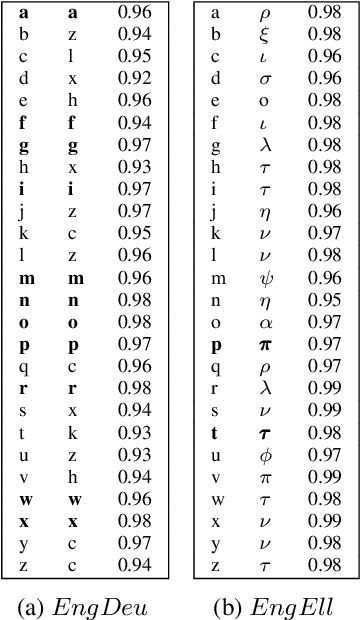
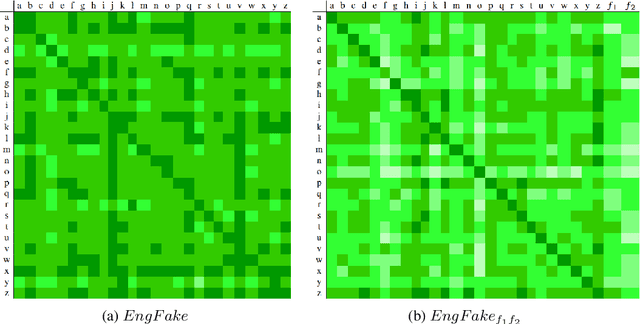
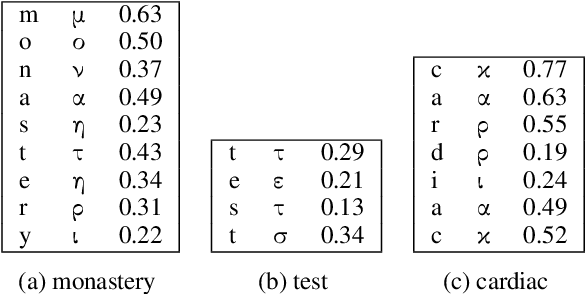
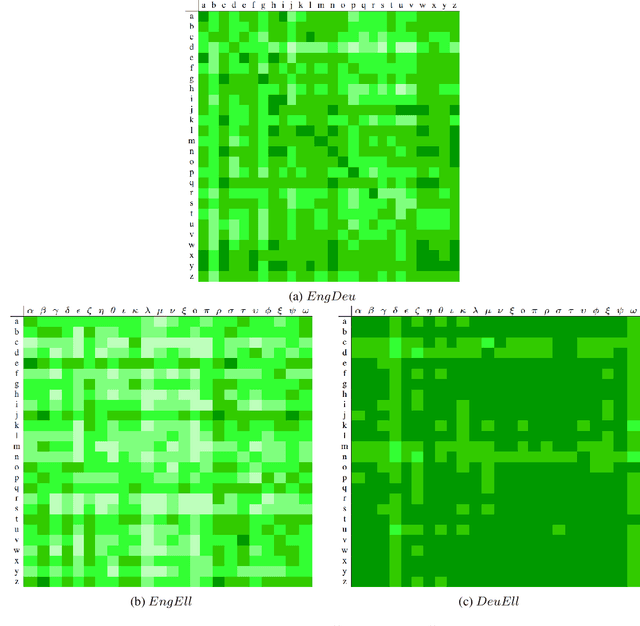
Abstract:In previous work, it has been shown that BERT can adequately align cross-lingual sentences on the word level. Here we investigate whether BERT can also operate as a char-level aligner. The languages examined are English, Fake-English, German and Greek. We show that the closer two languages are, the better BERT can align them on the character level. BERT indeed works well in English to Fake-English alignment, but this does not generalize to natural languages to the same extent. Nevertheless, the proximity of two languages does seem to be a factor. English is more related to German than to Greek and this is reflected in how well BERT aligns them; English to German is better than English to Greek. We examine multiple setups and show that the similarity matrices for natural languages show weaker relations the further apart two languages are.
Locating Language-Specific Information in Contextualized Embeddings
Sep 16, 2021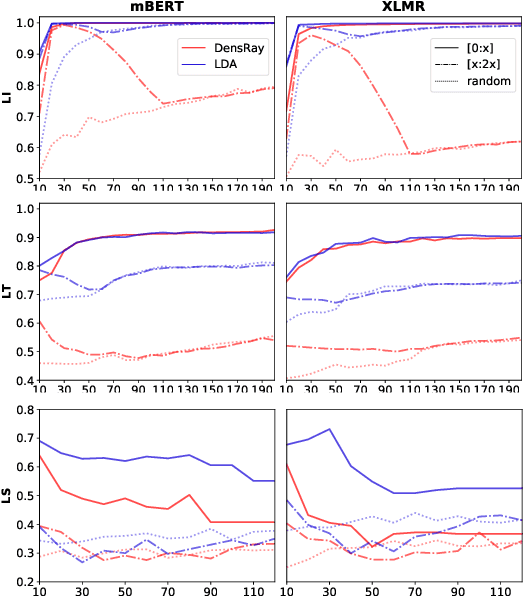
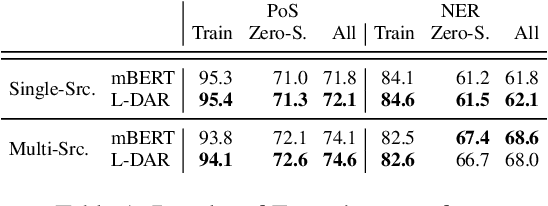
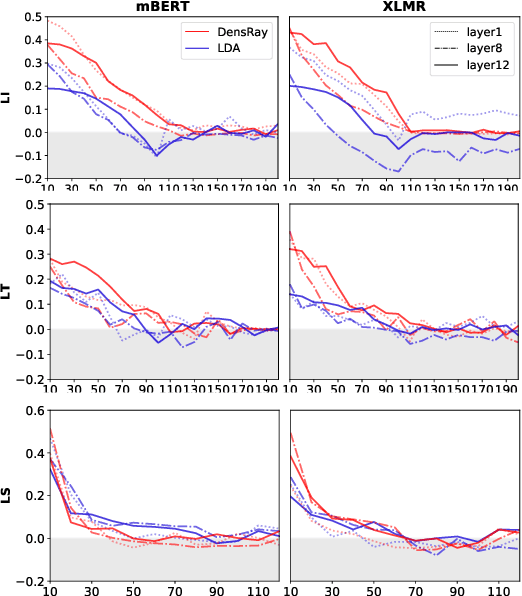
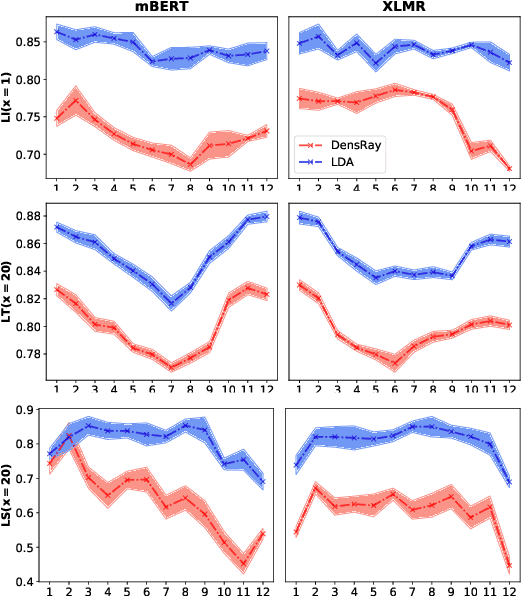
Abstract:Multilingual pretrained language models (MPLMs) exhibit multilinguality and are well suited for transfer across languages. Most MPLMs are trained in an unsupervised fashion and the relationship between their objective and multilinguality is unclear. More specifically, the question whether MPLM representations are language-agnostic or they simply interleave well with learned task prediction heads arises. In this work, we locate language-specific information in MPLMs and identify its dimensionality and the layers where this information occurs. We show that language-specific information is scattered across many dimensions, which can be projected into a linear subspace. Our study contributes to a better understanding of MPLM representations, going beyond treating them as unanalyzable blobs of information.
Graph Algorithms for Multiparallel Word Alignment
Sep 13, 2021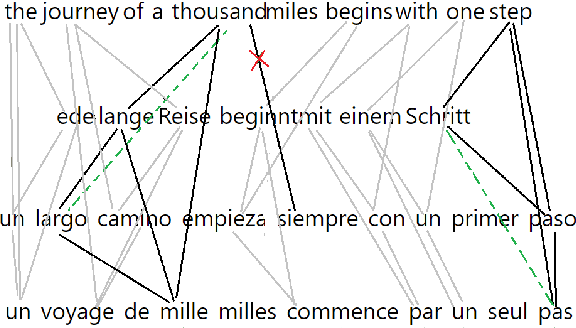
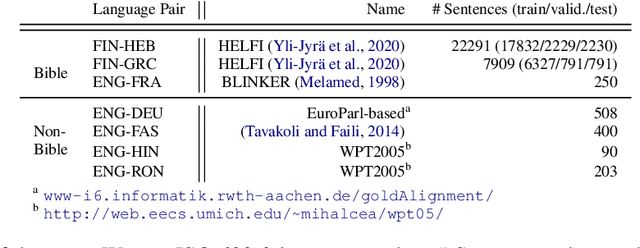
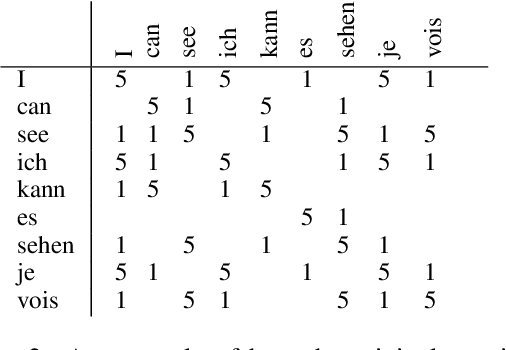
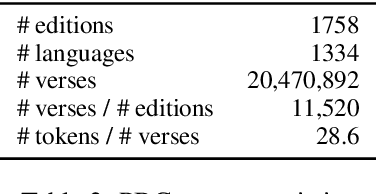
Abstract:With the advent of end-to-end deep learning approaches in machine translation, interest in word alignments initially decreased; however, they have again become a focus of research more recently. Alignments are useful for typological research, transferring formatting like markup to translated texts, and can be used in the decoding of machine translation systems. At the same time, massively multilingual processing is becoming an important NLP scenario, and pretrained language and machine translation models that are truly multilingual are proposed. However, most alignment algorithms rely on bitexts only and do not leverage the fact that many parallel corpora are multiparallel. In this work, we exploit the multiparallelity of corpora by representing an initial set of bilingual alignments as a graph and then predicting additional edges in the graph. We present two graph algorithms for edge prediction: one inspired by recommender systems and one based on network link prediction. Our experimental results show absolute improvements in $F_1$ of up to 28% over the baseline bilingual word aligner in different datasets.
Wine is Not v i n. -- On the Compatibility of Tokenizations Across Languages
Sep 13, 2021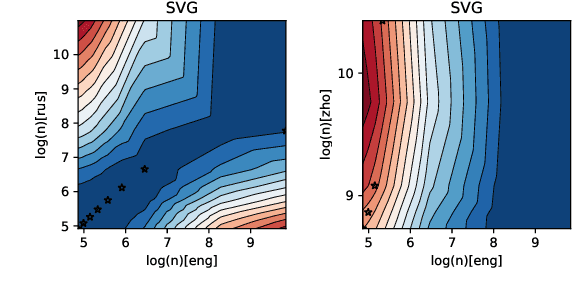
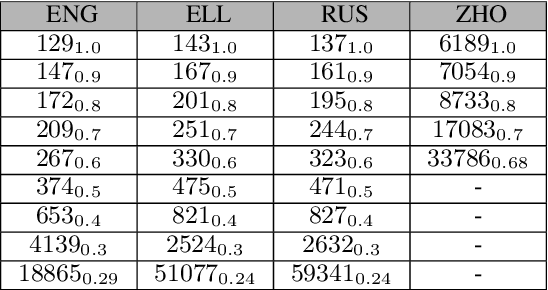
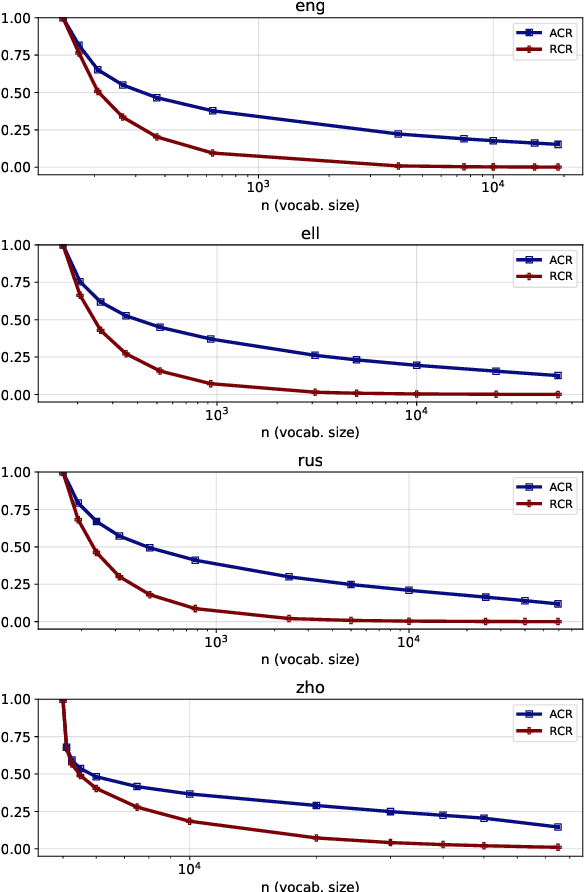
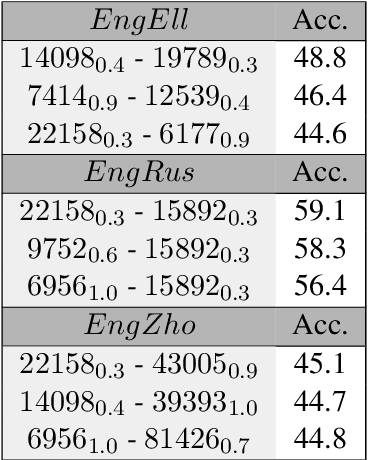
Abstract:The size of the vocabulary is a central design choice in large pretrained language models, with respect to both performance and memory requirements. Typically, subword tokenization algorithms such as byte pair encoding and WordPiece are used. In this work, we investigate the compatibility of tokenizations for multilingual static and contextualized embedding spaces and propose a measure that reflects the compatibility of tokenizations across languages. Our goal is to prevent incompatible tokenizations, e.g., "wine" (word-level) in English vs.\ "v i n" (character-level) in French, which make it hard to learn good multilingual semantic representations. We show that our compatibility measure allows the system designer to create vocabularies across languages that are compatible -- a desideratum that so far has been neglected in multilingual models.
 Add to Chrome
Add to Chrome Add to Firefox
Add to Firefox Add to Edge
Add to Edge